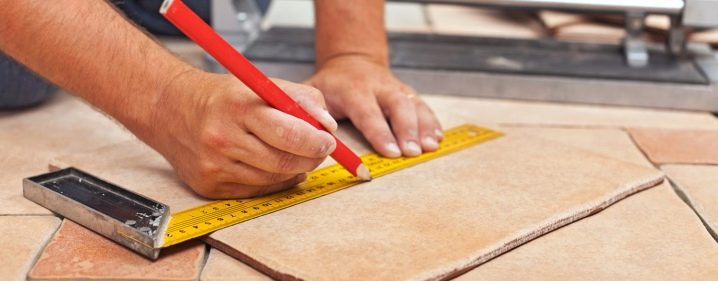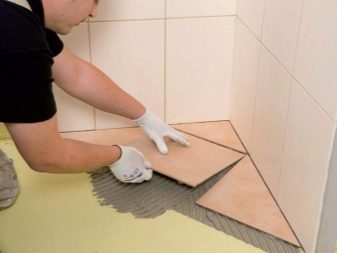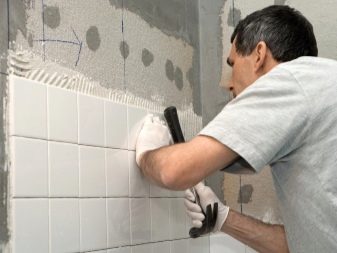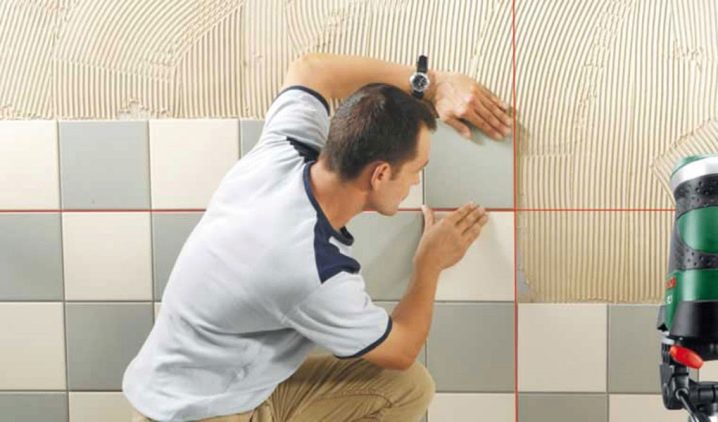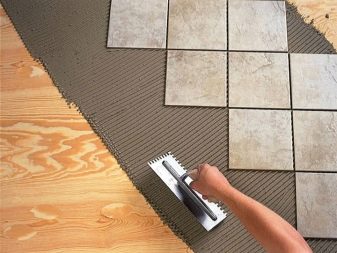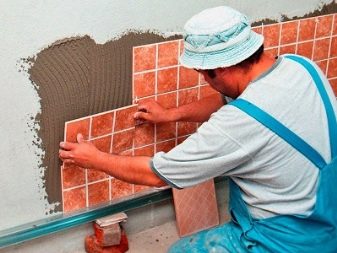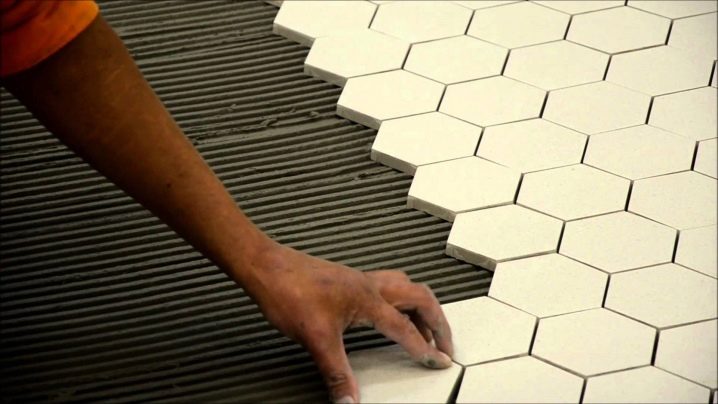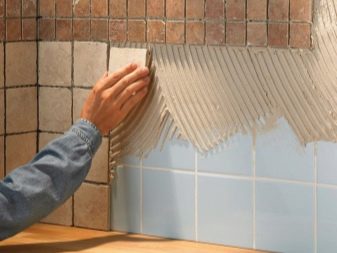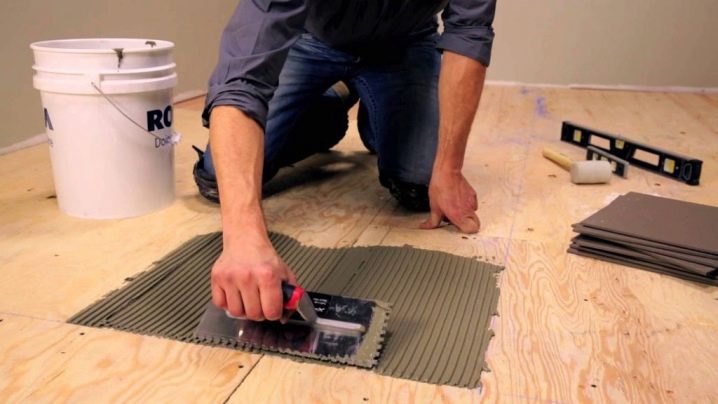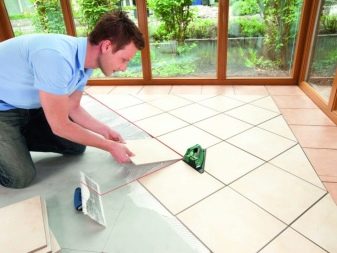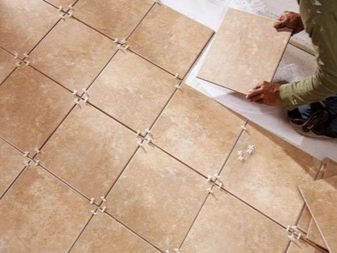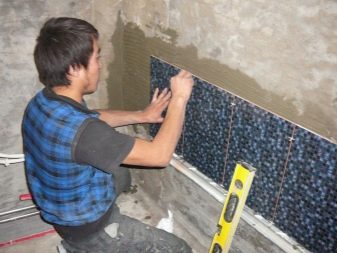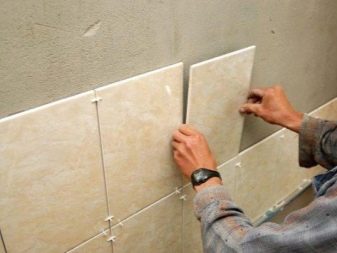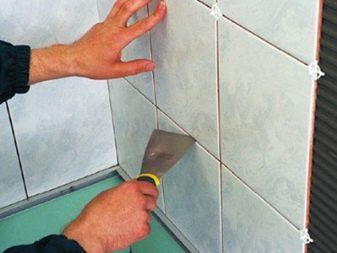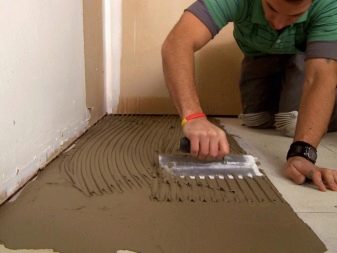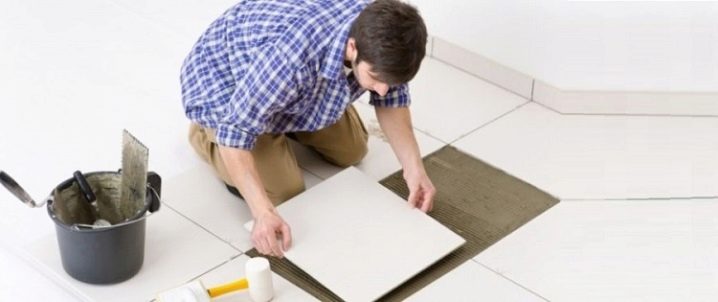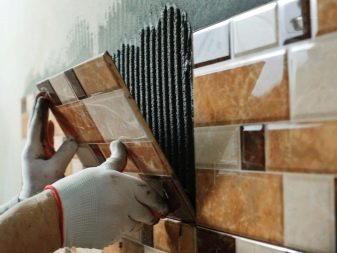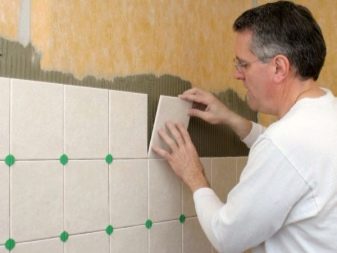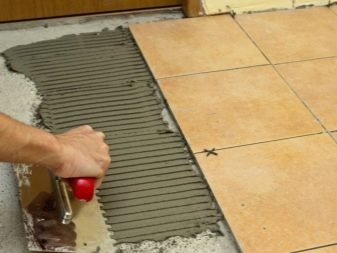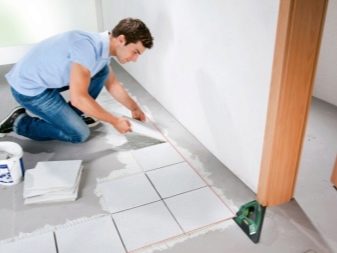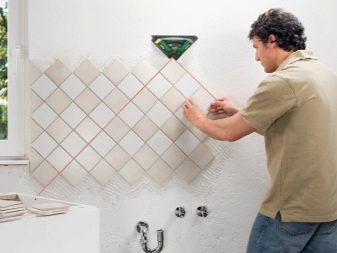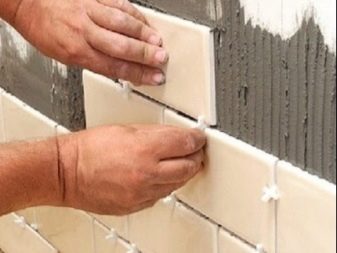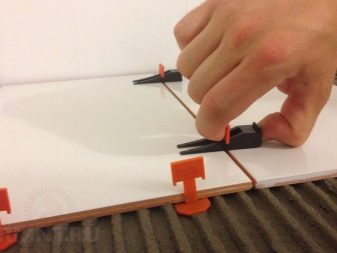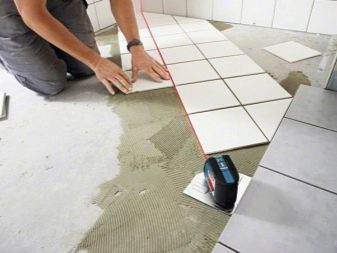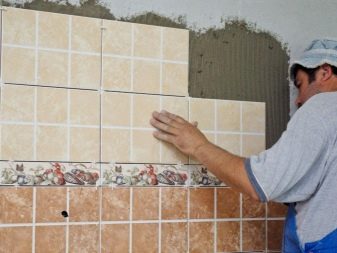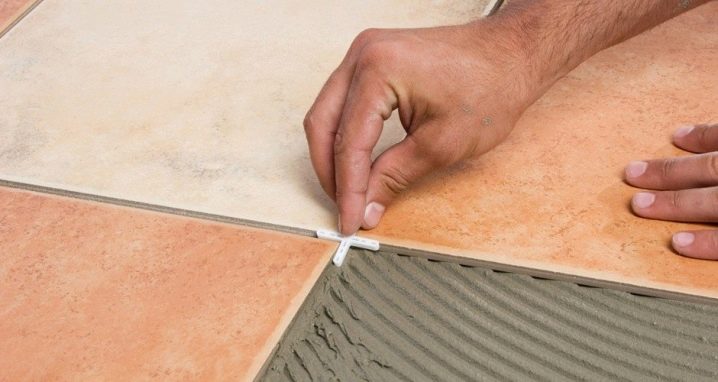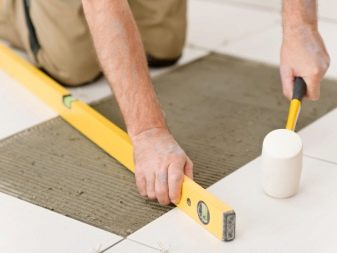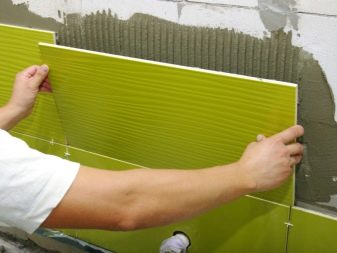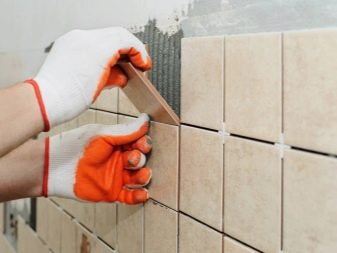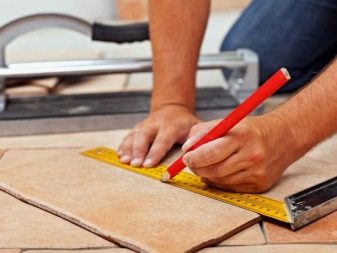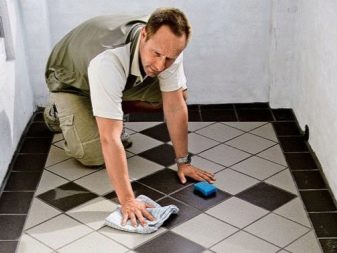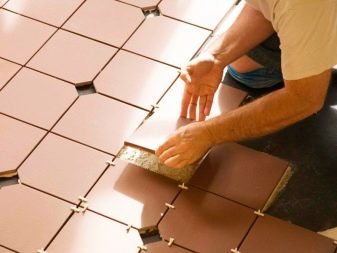How to calculate the required number of tiles?
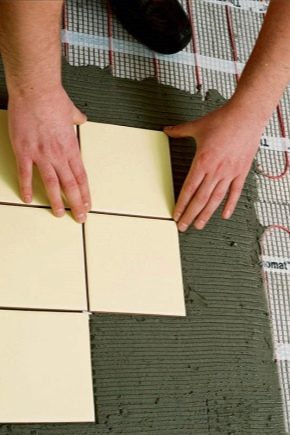
The correct calculation of the number of ceramic tiles will allow you to complete the repair on time and at optimum cost. How many elements to stick on the local area, for example, near the sink, it is easy to determine without calculations. Wrong calculation for large areas of lining is fraught with two extremes: stopping work due to the inability to purchase specific materials or unreasonable costs.
Process features
To minimize errors, consider:
- Parameters of materials. The size of the tiles, the number of colors depend on the design and offers on the market.Only by selecting the right samples in the store, proceed to the calculations.
- Laying option. For rooms with a predominance of right angles fit the arrangement of rows parallel to the walls. Trimming will be less, and the calculation is easier. Diagonal placement will improve the visual perception of irregular floor and ceiling shapes, but will complicate the calculation.
- The fit of the picture. Complicated ornamentation will require an additional 5% to the calculated amount of finishing material.
- The presence of decorative inserts. For each type of such elements a separate calculation is required.
- The thickness of the seam between the tiles. The importance of the parameter increases with decreasing the size of the tile: the seams become larger, and 4 millimeters of the seam in just 5 tiles will become 2 centimeters. The dimensions of the seams range from 2 to 10 millimeters.
- Reserve for battle and trimming. A standard is a reserve of 10% of the calculated number of tiles, diagonal and other non-standard types of laying increase it by 5-10%.
The complexity of the calculations determines the specific construction situation. Different methods of counting have their advantages and disadvantages.
Subtleties of the process
Calculation using specialized programs gives a more accurate result.A virtual three-dimensional model allows you to lay out on all surfaces, change the types of tiles and decorative elements, calculate the main consumption and trimming, the number of finishing elements and glue. Such opportunities are only expensive commercial products, buying them for one-time use is impractical.
Free applications and online calculators are suitable for standard ceramic products and rooms with simple geometry. Calculations with their help do not differ in accuracy, since they do not take into account the variety of parameters of a particular repair.
There are three methods to calculate the need for tile yourself: by the piece, by area, according to the scheme. Each method separately or in combination will allow to obtain the required accuracy of calculations.
For standard
The standard is called rectangular and square tiles. Trading enterprises realize it with the indication of the sizes of one product. The required number is calculated in square meters or individually.
The first stage in both variants is the calculation of the area for finishing:
- Measure the dimensions of the room, the dimensions of the door, window, bath. The height of the room is taken into account to the level of facing.
- Calculate separately the area of walls, floor, ceiling, apron (if available).
- For each surface, it is required to exclude areas on which there will be no laying: doors, window openings. If it is decided to do without facing the surface behind the bathroom, subtract it as well.
- Sum all values.
When finishing one type of tile all surfaces, the amount is rounded to the whole in a big way - this will be the desired value in square meters. If the floor and ceiling tiles have a different size - the calculations are done for each surface separately.
It is important to know that in case of diagonal laying, calculations are made only in square meters.
Piece counting has a smaller error. And for rooms with complex geometry it is he who gives the best result. The number of pieces is obtained by dividing the total surface area by the area of a unit of material. It is rounded up and added 10% for a fit.
Calculate the area of a rectangle easily. It is necessary to increase the width and length of the tile by the thickness of the seam and multiply. But tiled design allows you to use many other forms with different number of corners: from three to eight.In this case, it is not always possible to calculate the area, since the required dimensions may not be indicated on the package. For such cases, a different approach to the calculation is required.
For non-standard form
The geometrical forms that are difficult to calculate include not only the listed polyhedra, but also those figures for which there is no definite name: they have many different angles and smooth lines. The surface with such a coating looks impressive, but from the first time it is not always possible to understand how to calculate their area and quantity.
Tiles are realized in square meters, and if the budget allows, you can count tiles in meters, based on their squared room. In this case, the calculation will be the same as for a standard tile, but the percentage of trimming will increase to 30. A more accurate result will give a piece-by-piece calculation.
For non-standard products, manufacturers do not specify the size, but the number of pieces. in one square meter. This will help with the piece counting, but you cannot manage without creating a drawing. On graph paper mark the dimensions of the surface to scale.
From thick paper, cut out a tile pattern according to the sizes that are obtained at the store when sampling.With it, make "laying" along two adjacent walls. Multiplying the obtained values, find the main flow in pieces. Laying cardboard "tiles" on the drawing in places of irregular shape (recesses, protrusions), you can calculate more accurately and trim.
If the design requires the use of several colors of the same type of tile, they need to be painted over with a different color in the drawing. Count the number of solid products in one row. The values obtained are multiplied by the number of rows. This approach is used for all colors.
Mirror tiles trim all surfaces. They produce samples with fatset and without it, with edges sharpened at an angle. When calculating the number of differences between tile and mirror material is not. But because of the fragility, you need to increase by 5% margin for the fight.
Difficulties of a different kind arise when it is required to lay out a drawing of different types of elements.
Number of different samples
When using even two standard sizes, the method of calculation depends on their relative position. If the installation is standard (the seams are lined up in one line), then it is possible to calculate both in meters and in pieces.
A popular option is alternating horizontal rows of rectangular tiles of different heights, allows you to calculate the need for square meters:
- On the vertical side of the wall mark the segments equal to the sum of both heights with seams.
- The number of rows is multiplied by the total area of the two samples.
- The square facing, minus openings, divided by the result.
- The area of each type of tile is divided by two.
This method can also be applied to other variants with the basic layout, if the widths of the larger and smaller tiles are multiples of 45 and 15, 30 and 10. Using several strips of the frieze will reduce the amount of the main tile: their total area is conventionally considered not to be finished and subtracted.
Ceramics with a picture makes its own adjustments to the calculation. The ornament binds several cladding elements into one composition, it can be in the form of a border, be located in the center, cover the surface completely or in a mosaic way.
In this case, the calculation is done in a combined way - by the meter and by the piece. Pre-develop a lining scheme for each surface. Work on the drawing starts from the central elements or panels.
After calculating the number of pieces with an ornament, find their total area. Then subtract it from the facing surface. Consumption of the main tile in meters.
In some cases, one composition can be placed on two rectangles or four squares that cover the entire surface. This fact does not complicate the calculations: the parts are considered one element and make a standard calculation.
Layout methods that differ from the baseline require an individual approach.
Depending on the type of masonry
The number of one type of tile in a square meter with different laying options will be different. You can perform the calculation only according to the exact scheme. After marking the dimensions of the surface on the paper in a cage (graph paper) they begin to draw tiles, depending on the type of laying.
- "Herringbone" called a layout, when narrow rectangular stripes are placed at a right angle to each other. To begin with, they draw a line through the center of the room and begin to draw individual elements along it along the entire length, then the width. Multiply the numbers. Accurately calculate the trimming will be impossible, so to the resulting number of pieces add another 15%.
- In option "Christmas trees with attachment" On the scheme draw additional tiles of a smaller size. They are considered manually.
- For masonry in the form of a carpet use a large number of tiles of different shapes and colors. Before their layout through the centers of opposite sides draw lines. From the point of intersection they begin to form a pattern of carpet. First, calculate the number of tiles for the inner plane, then - on the perimeter.
- Masonry scramble has several variations. "Brick" requires that the beginning of each tile coincide with the middle of the next, "deck" - a shift of a third. A good choice for this type of masonry - bulk hog tiles. Its feature consists in the presence of edges oblique at an angle of 45 ° - facets.
- Diagonal - difficult to calculate the type of laying with the amount of waste from 15%.
The scheme is drawn as follows:
- diagonally from the corners of the room;
- on one pair of rays they draw squares of a tile of the required size;
- lay out the rest and count the whole tiles;
- count the halves around the perimeter.
It is important to correctly mark the first diagonal. For narrow spaces, it can pass through the center of the short side. For irregularly shaped rooms, near one of the walls so that the corners of the tile touch it. In this case, you can use to trim the halves and reduce consumption.
After finishing the laying of the tile, the seams are rubbed with a molding agent. Fugue consumption per 1 square meter of tile is calculated as the product of the joint length (in m2) and the grout consumption rate in grams.
The length of the seam is calculated according to the formula: F = (W + D) x (1 / (W)), where W is the width of the tile, D is the length.
Coefficient of flow Kp = Depth of the seam x Width of the seam x 1.5.
Tips and tricks
- When buying a tile, you need to ask about the opportunity to purchase a few pieces. Not all sellers are willing to offer this.
- The tiles are sold in packages indicating the number of square meters each. When calculating the required number of packs, the quotient from dividing the need for tile by the square of one package is always rounded up to the whole in a big direction.
- The presence of tiles behind the bathroom and under it is not required. Often, these surfaces are hidden apron. But even in this case the waterproofing will be weakened, which will lead to the appearance of mold in the most humid and adjacent room.
- It is impossible to lay tiles close to an uneven wall. First, draw a line at a distance and begin work from it. For uneven places use parts of different sizes - they also need to be calculated.
- If there is no skill in calculating carpet or diagonal lining schemes, then it is better to entrust it to a professional: in some stores a special computer program may be installed.
- For cases of finishing with expensive coating, a piece calculation can be made more accurate, given the nuances:
- Door and window openings rarely manage to “lay out” a whole number of tiles: you must trim along the entire perimeter of the hole. Replacing the total area of a door or window with one that only whole elements will occupy will make the calculation more accurate. This will reduce the number of spare tiles by 5%.
- If the last piece of a tile in a row has a cut piece that is more than half, then it can be used for the next row. As a result, the number of whole tiles will significantly decrease.
How accurate the calculation of the need for ceramics is to decide is the budget. The remainder of a dozen tiles cannot be considered an error; it can be used for local repair of the same surface.
How to put the tiles on the floor with your own hands, you can learn from the video below.
